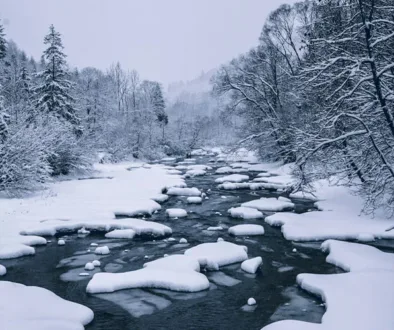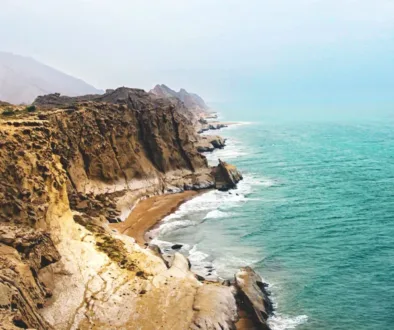Best time to visit Japan
Best time to visit Japan is depends on what you want to experience here. It is a fascinating place where traditional culture and modern innovation, coexist in perfect balance.
It’s important to remember and take into account a number of factors while making travel plans for Japan, including the weather, festivals, and the flow of tourists.
Here is an in-depth overview of the four seasons in Japan, highlighting the ideal travel seasons and the special experiences they bring.
Destinations / Japan
June 2023
Spring (March to May)
Spring is widely regarded as the best time to visit Japan, primarily due to the iconic cherry blossom season. In March, temperatures begin to warm up, ranging from 10-15°C (50-59°F). By April, cherry blossoms paint the country in delicate shades of pink, creating a breathtaking spectacle. The temperatures rise further to 15-20°C (59-68°F) in April and May, providing pleasant weather for outdoor activities.
Moreover, Japan’s parks, gardens, and historical sites become vibrant with hanami (flower viewing) parties, where locals and visitors gather beneath the cherry blossom trees to enjoy picnics and celebrate the arrival of spring. Iconic locations such as Tokyo’s Ueno Park, Kyoto’s Maruyama Park, and Hiroshima’s Peace Memorial Park are popular spots for cherry blossom viewing.
In addition, spring is also an excellent time to visit Japan’s cultural landmarks, including temples, shrines, and traditional gardens. With the backdrop of blooming cherry blossoms, these sites offer a captivating atmosphere for introspection and appreciation of Japan’s rich cultural heritage.

Summer (June to August):
Summer in Japan is characterized by warmer temperatures, high humidity, and occasional rainfall. Temperatures range from 25-30°C (77-86°F), with higher temperatures in July and August. While summer brings vibrant festivals and unique cultural experiences, it’s essential to be prepared for the heat and plan accordingly.
One of the notable events during summer is the Gion Matsuri festival in Kyoto, held throughout July. With vibrant processions, traditional music, and lively street stalls, it offers a glimpse into Japan’s traditional culture. Another highlight is the Sumida River Fireworks Festival in Tokyo, where spectacular fireworks light up the night sky, accompanied by food stalls and lively crowds.
Summertime in Japan provides opportunities for trekking and natural exploration for those who enjoy being outside. The famous Mount Fuji, the Hokkaido national parks, and the Japanese Alps all entice intrepid tourists. However, keep in mind that major tourist attractions could be congested at this time, so planning early and reserving lodging in advance is advised.

Autumn (September to November)
The alluring display of koyo, or fall foliage, makes autumn another well-liked time to travel to Japan. Between 20-25°C (68-77°F) in September and 10-15°C (50-59°F) in November, the temperatures start to drop.
Japan’s landscapes change into a magnificent array of reds, oranges, and yellows during the autumn. The vivid colours of maple and ginkgo trees set parks, gardens, and mountains ablaze. Famous locations like Tokyo’s Meiji Jingu Gaien and Kyoto’s Arashiyama Bamboo Grove offer stunning views for leisurely strolls and photography.
Autumn is also a fantastic season to visit Japan’s historical sites and participate in traditional tea rituals. Kyoto, with all of its numerous temples and shrines, is even more beautiful in the autumn. The Kansai region’s harvest festivals, such the Takayama Autumn Festival in Gifu and the Kurama Fire Festival in Kyoto, also give a glimpse into regional customs and festivities.

Winter (December to February):
Winter in Japan offers a unique blend of snowy landscapes, hot springs, and cultural festivities. In December, temperatures range from 5-10°C (41-50°F) in major cities, while in January and February, temperatures drop further, bringing colder weather and occasional snowfall.
Winter in Japan is synonymous with skiing and snowboarding, and the country boasts numerous world-class ski resorts. Popular destinations include Niseko in Hokkaido, Hakuba in Nagano, and Zao Onsen in Yamagata. These resorts offer excellent slopes, stunning winter scenery, and relaxing hot springs to unwind after a day on the slopes.
Winter is also a great season to see Japanese cultural customs like the New Year’s celebrations and holiday lighting displays. Stunning light shows adorn cities like Tokyo, Osaka, and Kyoto, fostering a mystical ambiance. The celebration of New Year’s Eve includes trips to the temple, customary ceremonies, and fireworks, providing a distinctive cultural experience.

Best time to visit Japan?
In conclusion, Japan offers a wide range of experiences all year round. Cherry blossoms captivate in the spring, vivid festivals fill the summer, flaming colours paint the landscape in the autumn and snowy adventures and cultural celebrations fill the winter. To determine the ideal time to visit this fascinating country, take into account your preferences, the weather, and the distinctive experiences each season has to offer.



